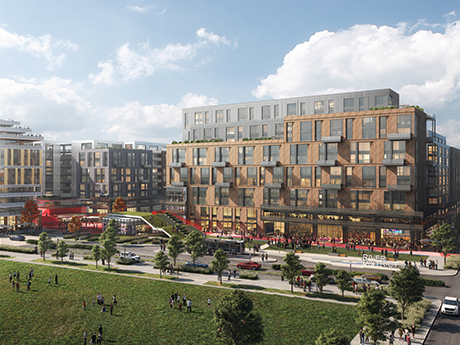The volatility in the capital markets over the past 12 to 18 months has wreaked havoc on many aspects of the economy, and real estate has not gone unscathed. Unlike the retail and office sectors whereby there is a fundamental shift in how people work and shop, housing is a basic need. The equilibrium between supply and demand in metro New Orleans’ multifamily market is still in sync.

It would however be naïve to suggest there are no challenges that are affecting our real estate market. The “three dreaded Is” (i.e. inflation, interest rates, insurance) is not a Halloween mask but a euphemism that crystallizes the challenges multifamily owners are faced with both locally and nationally. Each of these factors singularly are powerful forces, yet the trifecta is playing a role in the current state of our metro market.
However, despite these challenges, the regional multifamily market has stable occupancy with most submarkets reporting levels in the 92 to 94 percent range. Overall monthly rental rates average $1,263 with rents ranging from a low of $1,000 in Eastern New Orleans and Algiers to rents in the Downtown market as high as $3,000.
Once again, the barriers to entry (lack of developable land) have consistently constrained the supply and provided operators with the comfort that the market will not become overbuilt.
Inflation has dampened rent growth over the past 12 months; however, we are beginning to see some growth particularly in the Class A and B sectors. It should be noted that the metro saw significant rent growth once restrictions were lifted from the COVID-19 pandemic.
Although interest rates have affected the cash flow of properties, it is somewhat of a double-edged sword as it has priced many would-be homebuyers out of the market. We expect demand for rentals to grow as homeowners insurance has increased significantly as well.

Undoubtably, one of the most significant challenges has been the rising cost of insurance, which has created an unprecedented challenge for owners and investors alike. Experience has shown that insurance markets do settle down, however with the markets in flux it is hard to predict exactly when owners/investors can expect some relief. Properties in metro New Orleans are being sold taking the higher insurance premiums into consideration. Once insurance rates normalize, it should hold upside for those who underwrote with higher premiums.
Creativity always prevails when there is a need, as a result the insurance industry is pursuing alternative solutions in an effort to lower premiums. A few of these options include layered coverage amounts, self-insurance on a part of the risk, higher deductibles, para-metric coverage as well as some larger owners/management companies forming captives. Another critical step will be getting the lending community to accept these changes that are a departure from traditional coverage.
The “three Is” have dampened new construction, which we expect this to continue for the next six to 12 months. When construction resumes, suburban communities will be developed along the I-12 corridor in St. Tammany Parish. Situated north of New Orleans and Lake Pontchartrain, this submarket affords developers with an abundance of land on which to develop, proximity to major employment centers and average household income levels sufficient to support new market-rate development.
We further expect inventory being added in the urban core of the city, specifically in the River District neighborhood. In a recent announcement, Shell Oil Co. said it will locate its Gulf of Mexico operations to the currently under development River District. The area sits on 40 acres (about twice the area of Chicago’s Millennium Park) next to the convention center on the banks of the Mississippi River. The River District comprehensive plan includes a multitude of retail, office, residential and entertainment venues.

Seasoned investors are accustomed to challenges, and as a result they continue to seek acquisition opportunities for multifamily deals. Over the past nine months there have been several notable sales. In March 2023, the American Can Apartments (268 units) was sold by Audubon Communities / Green Hollow Capital Partners to Key Real Estate Co.
Other sales include Huntington Park Apartments (161 units) in New Orleans East, as well as Louisburg Square Apartments (304 units) and Alexas Gardens (112 units), both located on the Westbank of Jefferson Parish. We expect more conveyances in the last quarter of 2023.
New Orleans has endured challenges in the past, and there is a proven resiliency here that has not gone unnoticed by investors. Recognizing the short-term challenges, the fundamentals and the dynamics of our multifamily market remain strong. We will get past the three dreaded “Is.”
— By Larry Schedler, Cheryl Short and Christian Schedler, principals with Larry G. Schedler & Associates, Inc. / Cushman & Wakefield Sunbelt Multifamily Advisory Group. This article was originally published in the October 2023 issue of Southeast Real Estate Business.


